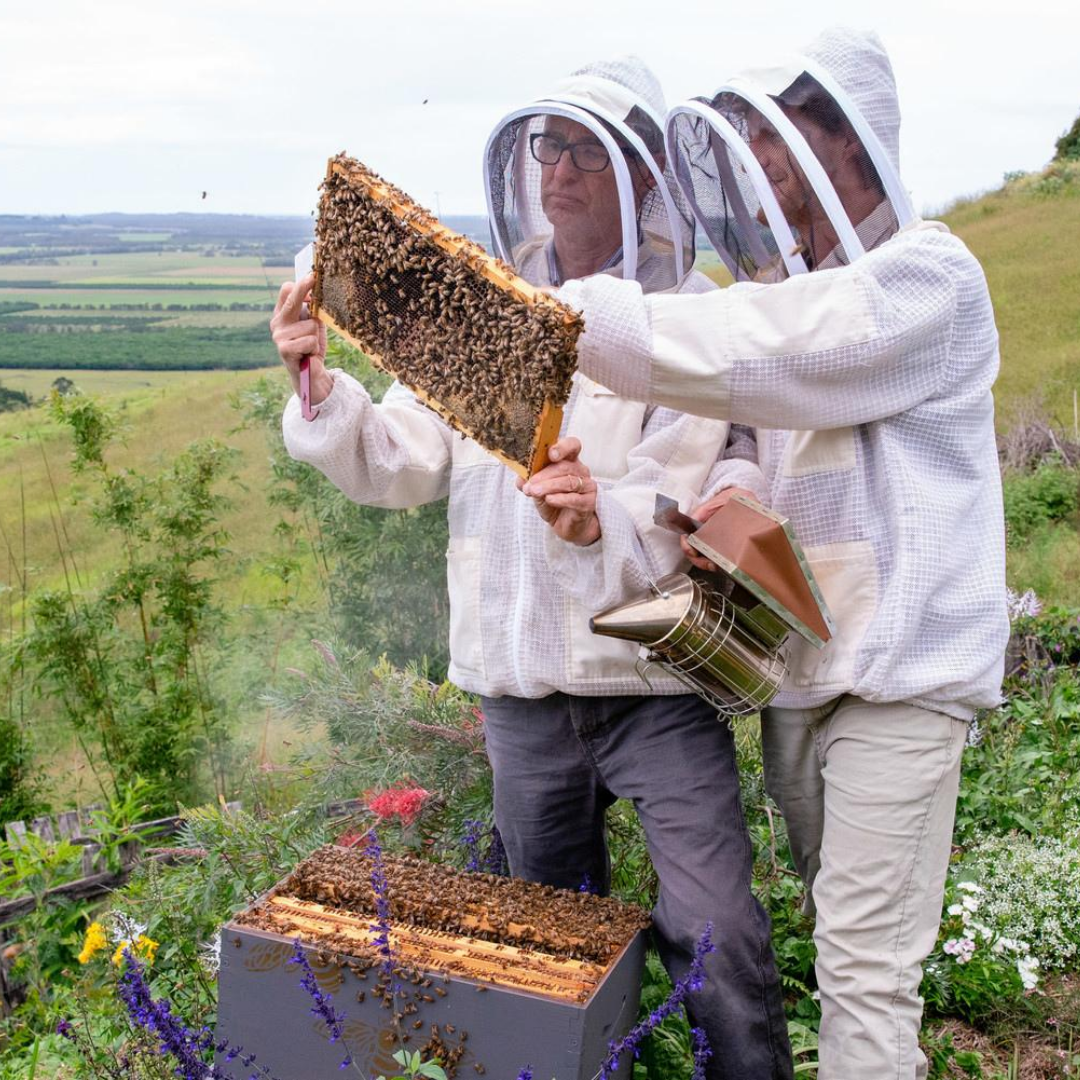Your Cart is Empty
What do bees eat?
by Flow Hive 4 min read
Honeybees don’t just eat honey. Like us, bees need a balanced diet, with carbohydrates, proteins, vitamins, minerals, and amino acids. Honeybee food comes from flowers - carbohydrates from nectar and protein from pollen. What bees eat varies depending on their development stage, role in the colony, and food availability.
Here we’ll take a closer look at the honeybee diet. We look into when beekeepers should feed their bees.
Nectar & honey
Nectar is the main food of adult honeybees. Nectar is a sugary liquid produced by plants in special glands called nectaries. The plants produce nectar to attract bees and other pollinators. When the bees visit different flowers, they transfer pollen grains, enabling the plants to reproduce. It’s an amazing act of partnership between plants and bees!
Learn more about pollination in this amazing video from our online education platform - TheBeekeeper.org.
Honeybees collect nectar from flowers and store it in a special organ called the “honey stomach” while they carry it back to the beehive. The bees store nectar in cells, then reduce the water content until it becomes syrupy - and that’s honey!
Honey is preserved nectar, and this is what the bees feed on when there aren’t many flowers in bloom - like during long winters or droughts. For an in-depth look at the process, see our blog - How do bees make honey?
The great thing for us is that often bees make more honey than they need for themselves. That’s when beekeepers can collect some of that sweet honey to enjoy. And there’s no easier way to collect honey than with a beehive starter kit from Flow Hive.
Pollen & bee bread
As we mentioned above, pollen is how most plants reproduce. Tiny pollen grains transfer genetic material between plants - and honeybees are the most efficient pollinators on the planet. Honeybees also eat pollen - it’s their main protein source. They collect it in special “pollen baskets” on their legs.

These incredible structures are magnified pollen grains. (Image from The magic of pollination - TheBeekeeper.org.)
Did you know that bees make their own bread? - To do this, they pack the pollen into honeycomb cells and mix it with nectar, then they seal the cells with honey. They leave this mixture to ferment - like a good sourdough. Foraging bees can’t digest pollen directly, so this process makes the protein in pollen available to them. It’s called bee bread and is a very important food for the developing larvae.
Royal Jelly
You may have heard of royal jelly before, but maybe didn’t know what it is. This special substance is a queen-maker! Royal jelly is a white substance containing sugar, protein, and other micronutrients. Nurse bees secrete royal jelly from special glands, and then feed it to the developing larvae. Most larvae only get royal jelly for the first three days after they hatch - after that they are sustained with bee bread and honey.
But if the larva has hatched into a special cell called a queen cup, the nurse bees will exclusively feed this larva royal jelly throughout her development - and this is what triggers her to become a queen bee.
Other bees
But honeybees aren’t the only type of bee around. In fact, there are about 20,000 species of bee in the world - and most of them don’t make honey or live in big colonies. Lots do eat pollen and nectar, but some species have a more varied diet. This can include floral oils, fungi, meat, other bees’ eggs, and even sweat and tears.



A few examples of beautiful bees that aren’t honeybees.
Feeding your bees
If you’ve got a beehive of your own, there are times you may need to give them extra food to make sure they stay healthy and strong when there aren’t many flowers about. Simple sugar water is the most common bee food, while pollen patties, dry sugar, and specially prepared syrups are also options.
We’ve got more info on what, when, and how to feed your bees on our support portal and YouTube channel. And if you’re looking for detailed lessons on bee nutrition, how to make feeders, and lots more, sign up for our online beekeeping course - TheBeekeeper.org.
Becoming a beekeeper

Now that you know what bees eat, maybe you’re thinking about getting some of your own. There’s really nothing like tasting delicious honey from your backyard! A beehive starter kit from Flow Hive offers the best in honey harvesting - saving the need for messy work and extra equipment. Plus, we’ve got a wealth of resources to support new beekeepers in their new endeavour.
SHOP NOW
Not sure if keeping bees is right for you? Got more questions?
Our friendly support team is here to help.
CONTACT US
Also in Beekeeping Basics

How to Conduct Brood Inspections
by Flow Admin 5 min read
Brood inspections are an incredibly important part of beekeeping – if not the most important part!



